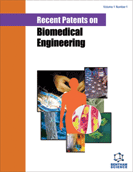Abstract
Electronic pacemaker, since its invention over five decades ago, has saved numerous lives and improved the life quality of patients suffering from cardiac arrhythmias. However, it has its own limitations. Over the past decade, rapid progress in the molecular studies of cardiac ion channels and stem cell biology has led to efforts for creating a biological pacemaker to supplement the widely used electronic pacemaker. This patent review focuses on the development of the ideas for creating a working biological pacemaker. The gene-based and cell-based approaches to meet the requirements of a working biological pacemaker will be reviewed. The important roles of the hyperpolarization-activated cyclic, nucleotide- modulated (HCN) channels, the inward rectifier Kir2.1 potassium channels, and the gap junctions in the biological pacemaker system will be discussed. Finally, the recent development of cell-based strategy and precautions for creation of an effective biological pacemaker superior to the electronic counterpart will also be discussed.
Keywords: Bradycardia, electronic pacemaker, biological pacemaker, potassium channel, pacemaker channel, gap junction, stem cell
 14
14

